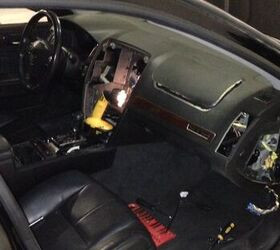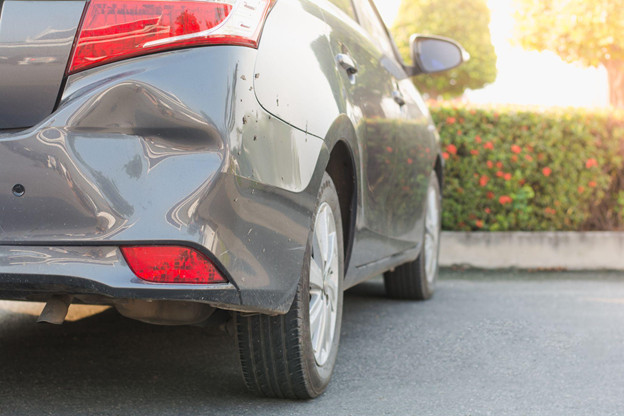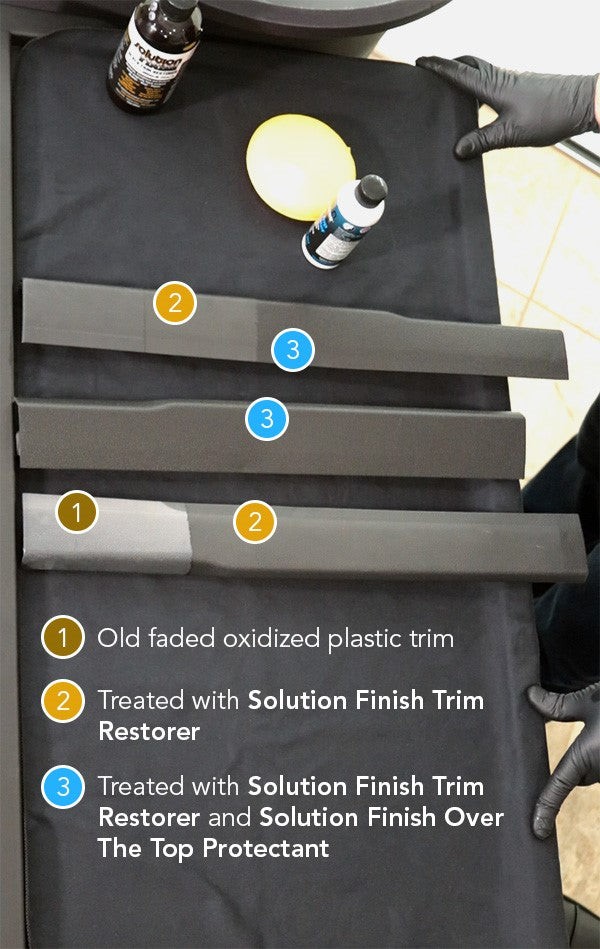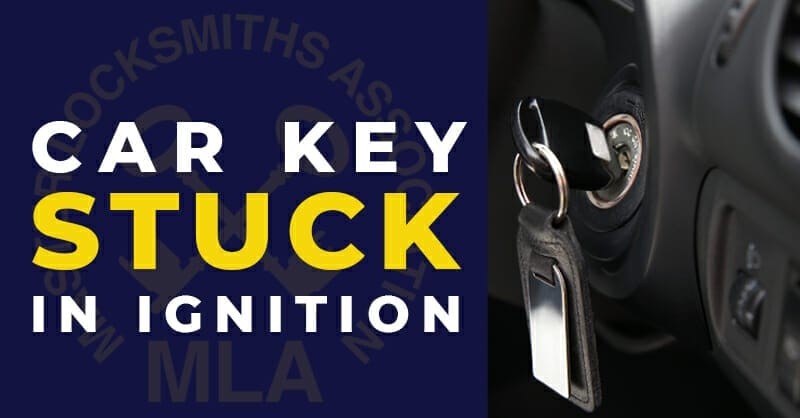How To Fix Ding On Car Door: A Comprehensive Guide
Fixing a ding on your car door can restore your vehicle’s appearance and protect its value. CARDIAGTECH.NET provides expert advice and the tools you need to tackle this common auto repair task effectively. Discover how to remove those unsightly blemishes and keep your car looking its best with our detailed guide, covering everything from DIY methods to professional solutions for car door dent repair, paintless dent removal, and auto body repair.
1. Understanding Car Door Dings and Their Causes
Car door dings are those small, annoying dents that seem to appear out of nowhere. They can be caused by a variety of factors, from runaway shopping carts to careless neighboring cars in parking lots. Understanding the causes can help you take preventative measures, but knowing how to fix them is essential for any car owner.
- Parking Lots: Tight spaces and careless drivers are a recipe for door dings.
- Weather: Hail and flying debris can cause small dents.
- Accidents: Even minor fender-benders can result in door dings.
2. Types of Car Door Dings
Not all dings are created equal. Understanding the type of ding you’re dealing with is crucial for choosing the right repair method.
- Ding: A small, shallow dent with no paint damage.
- Round Dent: A circular indentation that can often be “popped” back into place.
- Sharp Dent: A small but deep divot that’s more challenging to repair.
- Crease Dent: A long, folded dent that usually involves paint damage and requires professional attention.
- Serious Dents: Large or multiple dents, often indicating structural damage.
| Type of Dent | Description | DIY or Professional Repair? |
|---|---|---|
| Ding | Small, shallow dent | DIY |
| Round Dent | Circular indentation | DIY |
| Sharp Dent | Small, deep divot | Professional |
| Crease Dent | Long, folded dent with paint damage | Professional |
| Serious Dents | Large, multiple dents, potential structural damage | Professional |
3. Why It’s Important to Fix Car Door Dings Promptly
Addressing car door dings isn’t just about aesthetics; it’s about preserving the integrity of your vehicle. Here’s why timely dent repair is crucial:
- Preventing Rust: Dings that chip or scratch the paint expose the metal underneath, leading to rust.
- Maintaining Value: Dings can decrease your car’s resale value.
- Avoiding Further Damage: Small dings can worsen over time due to weather and vibrations.
- Safety Concerns: Larger dents can sometimes indicate underlying structural damage.
- Fuel Efficiency: While minor, multiple dents can slightly reduce fuel economy by disrupting airflow.
4. DIY Methods for Fixing Car Door Dings
For minor dings, you can try several DIY methods. These techniques are cost-effective and can be done at home with the right tools and a bit of patience. CARDIAGTECH.NET offers a range of tools and kits to assist you with these repairs.
4.1. Using a Plunger
A simple plunger, like the one you use for your toilet, can work wonders on shallow dings.
- Clean the Area: Wipe the ding and surrounding area with a clean, damp cloth.
- Apply Water: Lightly wet the plunger and the car’s surface.
- Position the Plunger: Place the plunger directly over the ding, ensuring a good seal.
- Push and Pull: Gently push and pull the plunger in a steady motion.
- Repeat: Continue until the ding pops out.
4.2. Hair Dryer and Compressed Air
This method uses heat to make the metal more pliable and then rapidly cools it to encourage the dent to pop out.
- Heat the Dent: Use a hair dryer on a medium setting to heat the area around the dent for several minutes.
- Apply Compressed Air: Immediately after heating, spray compressed air upside down directly onto the heated area. The rapid cooling can cause the metal to contract and pop back into place.
- Check Results: If the ding doesn’t pop out immediately, repeat the process a few times.
4.3. Dent Puller Kits
Dent puller kits are available at most auto parts stores and online through CARDIAGTECH.NET. These kits typically include a suction cup or glue-on tabs and a pulling device.
- Clean the Area: Thoroughly clean the area around the ding.
- Apply Suction Cup or Glue Tab: Attach the suction cup or glue tab to the center of the dent. If using glue, allow it to dry completely.
- Use Pulling Device: Attach the pulling device and gently pull the dent out.
- Remove Residue: If you used glue, carefully remove any residue with a plastic scraper and adhesive remover.
4.4. Hot Water Method
This simple method is best for plastic bumpers but can sometimes work on metal as well.
- Heat Water: Boil a pot of water.
- Pour Water: Slowly pour the hot water over the dented area.
- Reach Behind the Bumper: Reach behind the bumper and gently push the dent out. The heat from the water will make the plastic more flexible.
4.5. Using a Hammer and Dolly
This method is more advanced and requires some skill, but it can be effective for larger, more complex dents.
- Access the Back of the Dent: If possible, access the back of the dent by removing any necessary panels or components.
- Position the Dolly: Hold the dolly against the back of the dent.
- Hammer the Dent: Gently tap the dent from the front with a rubber or plastic hammer, working from the outside in.
- Check Progress: Regularly check your progress to avoid over-hammering the area.
5. Professional Car Door Ding Repair Options
When DIY methods aren’t enough, or if you’re dealing with a more significant dent, it’s time to call in the professionals. Here are the most common professional repair options:
5.1. Paintless Dent Repair (PDR)
Paintless Dent Repair (PDR) is a technique that removes dents without affecting the vehicle’s paint finish. It’s an excellent option for small to medium-sized dents that haven’t damaged the paint.
- How It Works: PDR technicians use specialized tools to gently massage the metal back into its original shape from behind the panel.
- Advantages: Cost-effective, preserves the original paint, and quick turnaround time.
- Limitations: Not suitable for dents with paint damage or very large, complex dents.
5.2. Traditional Auto Body Repair
For larger dents or those with paint damage, traditional auto body repair is necessary. This involves filling the dent with body filler, sanding it smooth, and repainting the area.
- Dent Removal: The technician will first try to pull the dent out as much as possible.
- Body Filler Application: Body filler is applied to fill in the remaining dent.
- Sanding: The filler is sanded down to create a smooth, even surface.
- Priming: A primer is applied to prepare the surface for painting.
- Painting: The area is painted to match the vehicle’s original color.
5.3. Dent Removal Cost
The cost to fix a car door ding varies based on the size and complexity of the dent, the repair method, and the location. Here’s a general idea:
- DIY Repair: $20 – $100 (for tools and materials)
- Paintless Dent Repair (PDR): $75 – $500
- Traditional Auto Body Repair: $200 – $2,000+
| Repair Method | Estimated Cost |
|---|---|
| DIY Repair | $20 – $100 |
| Paintless Dent Repair (PDR) | $75 – $500 |
| Traditional Auto Body Repair | $200 – $2,000+ |
6. Choosing the Right Repair Method
Deciding whether to tackle a car door ding yourself or seek professional help depends on several factors:
- Size and Depth of the Dent: Small, shallow dents are usually suitable for DIY repair, while larger, deeper dents require professional attention.
- Paint Damage: If the paint is scratched or chipped, you’ll likely need professional repair to ensure a seamless finish.
- Your Skill Level: DIY repair requires some skill and patience. If you’re not comfortable working on your car, it’s best to leave it to the professionals.
- Cost: DIY repair is generally cheaper, but professional repair may be necessary for more complex dents.
7. Essential Tools and Equipment for DIY Dent Repair
Having the right tools can make all the difference in a DIY dent repair project. Here are some essential tools and equipment you’ll need: CARDIAGTECH.NET offers a wide selection of these tools, ensuring you have everything you need for a successful repair.
- Dent Puller Kit: Includes suction cups, glue tabs, and a pulling device.
- Rubber Mallet: For gently tapping out dents.
- Hair Dryer: For heating the metal.
- Compressed Air: For rapid cooling.
- Body Filler: For filling in dents.
- Sandpaper: Various grits for smoothing the body filler.
- Primer: To prepare the surface for painting.
- Paint: Matching your car’s color.
- Microfiber Cloths: For cleaning and wiping surfaces.
- Safety Glasses: To protect your eyes.
- Gloves: To protect your hands.
8. Step-by-Step Guide to DIY Car Door Ding Repair
Here’s a detailed step-by-step guide to repairing a car door ding using a dent puller kit and body filler.
Step 1: Preparation
- Clean the Area: Wash the area around the dent with soap and water, then dry it thoroughly with a microfiber cloth.
- Inspect the Damage: Assess the size and depth of the dent, and check for any paint damage.
Step 2: Dent Removal with Puller Kit
- Apply Glue Tab: Attach a glue tab to the center of the dent.
- Allow Glue to Dry: Let the glue dry completely, as per the kit’s instructions (usually 5-10 minutes).
- Attach Pulling Device: Attach the pulling device to the glue tab.
- Gently Pull: Gently pull the dent out, using the pulling device.
- Repeat as Needed: Repeat the process as needed, moving the glue tab to different parts of the dent.
Step 3: Body Filler Application
- Mix Body Filler: Mix the body filler according to the manufacturer’s instructions.
- Apply Body Filler: Apply the body filler to the dent, using a plastic spreader.
- Allow to Dry: Let the body filler dry completely (usually 20-30 minutes).
Step 4: Sanding
- Sand with Coarse Sandpaper: Start with 80-grit sandpaper to remove excess body filler.
- Sand with Medium Sandpaper: Switch to 180-grit sandpaper to smooth the surface.
- Sand with Fine Sandpaper: Finish with 320-grit sandpaper to remove any scratches.
Step 5: Priming and Painting
- Apply Primer: Apply a thin coat of primer to the sanded area.
- Allow to Dry: Let the primer dry completely.
- Apply Paint: Apply several thin coats of paint, allowing each coat to dry before applying the next.
- Apply Clear Coat: Apply a clear coat to protect the paint and give it a glossy finish.
9. Tips for Preventing Car Door Dings
Prevention is always better than cure. Here are some tips to help you avoid car door dings in the first place:
- Park Away from Other Cars: Choose parking spots that are further away from other vehicles.
- Park Strategically: Park next to cars that are less likely to cause dings, such as newer, well-maintained vehicles.
- Use Door Guards: Install door edge guards to protect your doors from dings.
- Be Mindful of Your Surroundings: Pay attention to potential hazards, such as shopping carts and wind.
10. Maintaining Your Car’s Finish After Ding Repair
Once you’ve repaired a car door ding, it’s essential to maintain the finish to prevent future damage and keep your car looking its best.
- Regular Washing: Wash your car regularly to remove dirt, dust, and other contaminants.
- Waxing: Apply wax every few months to protect the paint and give it a glossy finish.
- Touch-Up Paint: Keep a bottle of touch-up paint on hand to repair any minor scratches or chips.
- Protective Coatings: Consider applying a ceramic coating or paint protection film to provide an extra layer of protection.
11. Advanced Techniques for Complex Dents
While many dings can be fixed with basic techniques, some dents require more advanced methods and tools. Here are a few advanced techniques for complex dents:
11.1. Using Heat Guns
Heat guns can be used to heat the metal more evenly and effectively than a hair dryer. This is especially useful for larger dents or those in thicker metal panels.
- How to Use: Use the heat gun on a low setting and move it constantly to avoid overheating the paint.
11.2. Slide Hammers
Slide hammers are used to pull out dents with more force than a standard dent puller kit. They are particularly effective for dents in труднодоступных areas.
- How to Use: Attach the slide hammer to the dent using a glue tab or suction cup, then slide the hammer along the shaft to generate force.
11.3. Welding Techniques
In some cases, welding may be necessary to repair a dent, especially if the metal is stretched or torn. This requires specialized equipment and skills and should only be attempted by experienced professionals.
- How to Use: A welder is used to attach small pins or washers to the dent, which are then used to pull the metal back into shape.
12. The Role of Technology in Modern Dent Repair
Technology has revolutionized the auto repair industry, and dent repair is no exception. Here are some of the latest technological advancements in dent repair:
- 3D Dent Scanners: These scanners create a precise 3D model of the dent, allowing technicians to plan the repair more accurately.
- Robotic Dent Repair Systems: These systems use robots to perform dent repair with greater precision and efficiency.
- Induction Heating: Induction heating is used to heat the metal more evenly and quickly than traditional methods, reducing the risk of paint damage.
13. Understanding Insurance Coverage for Dent Repair
Whether your insurance covers dent repair depends on the type of coverage you have and the circumstances of the damage.
- Comprehensive Coverage: Comprehensive coverage typically covers damage from events like hail, vandalism, or falling objects.
- Collision Coverage: Collision coverage covers damage from accidents, regardless of who is at fault.
- Deductibles: Keep in mind that you’ll likely have to pay a deductible before your insurance coverage kicks in.
14. Choosing a Reputable Auto Body Shop
If you decide to seek professional dent repair, it’s essential to choose a reputable auto body shop. Here are some tips for finding a good shop:
- Check Online Reviews: Read online reviews to see what other customers have to say about their experiences.
- Get Recommendations: Ask friends, family, or colleagues for recommendations.
- Look for Certifications: Choose a shop that is certified by organizations like ASE (Automotive Service Excellence).
- Get Multiple Estimates: Get estimates from several shops to compare prices and services.
- Ask About Warranties: Make sure the shop offers a warranty on their work.
15. Common Mistakes to Avoid During DIY Dent Repair
DIY dent repair can be a rewarding experience, but it’s essential to avoid common mistakes that can worsen the damage or lead to unsatisfactory results.
- Using Too Much Force: Applying too much force can stretch the metal or damage the paint.
- Overheating the Paint: Overheating the paint can cause it to blister or peel.
- Using the Wrong Tools: Using the wrong tools can damage the metal or leave scratches.
- Skipping Preparation Steps: Skipping preparation steps like cleaning and sanding can lead to poor adhesion of body filler and paint.
16. Eco-Friendly Dent Repair Options
As environmental awareness grows, so does the demand for eco-friendly auto repair options. Here are some eco-friendly dent repair options:
- Paintless Dent Repair (PDR): PDR is an eco-friendly option because it doesn’t require the use of paints or solvents.
- Water-Based Paints: Water-based paints are a more environmentally friendly alternative to traditional solvent-based paints.
- Recycled Parts: Some auto body shops use recycled parts to reduce waste and conserve resources.
17. Future Trends in Car Door Ding Repair
The field of car door ding repair is constantly evolving, with new technologies and techniques emerging all the time. Here are some future trends to watch out for:
- Artificial Intelligence (AI): AI is being used to develop more sophisticated dent detection and repair systems.
- Nanomaterials: Nanomaterials are being used to create more durable and scratch-resistant paints and coatings.
- Self-Healing Materials: Self-healing materials are being developed that can automatically repair minor scratches and dents.
18. Real-Life Examples of Successful Car Door Ding Repairs
To illustrate the effectiveness of various dent repair methods, here are a few real-life examples of successful car door ding repairs:
- Example 1: Small Ding Repaired with Plunger: A car owner was able to remove a small, shallow ding from their car door using a simple plunger in just a few minutes.
- Example 2: Medium Dent Repaired with PDR: A PDR technician was able to remove a medium-sized dent from a car fender without damaging the paint, saving the owner hundreds of dollars compared to traditional auto body repair.
- Example 3: Large Dent Repaired with Traditional Auto Body Repair: An auto body shop was able to repair a large dent with paint damage by filling it with body filler, sanding it smooth, and repainting the area to match the car’s original color.
19. How to Choose the Right Car Door Ding Repair Kit
With so many car door ding repair kits on the market, it can be challenging to choose the right one for your needs. Here are some factors to consider:
- Type of Dent: Choose a kit that is designed for the type of dent you’re dealing with (e.g., small, shallow dents vs. larger, deeper dents).
- Ease of Use: Look for a kit that is easy to use and comes with clear instructions.
- Quality of Tools: Choose a kit that includes high-quality tools that are durable and effective.
- Price: Consider your budget and choose a kit that offers good value for the money.
20. FAQs About Car Door Ding Repair
Here are some frequently asked questions about car door ding repair:
- Can I fix a car door ding myself?
- Yes, many small dings can be fixed with DIY methods.
- How much does it cost to fix a car door ding?
- The cost ranges from $20 for DIY to $2,000+ for professional repair.
- Does insurance cover car door ding repair?
- It depends on your coverage and the circumstances of the damage.
- What is paintless dent repair (PDR)?
- A technique that removes dents without affecting the paint finish.
- How long does it take to fix a car door ding?
- DIY can take minutes to hours; professional repair can take hours to days.
- What tools do I need for DIY dent repair?
- Dent puller kit, rubber mallet, hair dryer, compressed air, etc.
- Can a heat gun damage my car’s paint?
- Yes, if used improperly. Use on a low setting and keep it moving.
- Is it better to repair or replace a dented car door?
- Repair is usually more cost-effective, but replacement may be necessary for severe damage.
- How can I prevent car door dings?
- Park away from other cars, use door guards, and be mindful of surroundings.
- What should I do if my car door ding has paint damage?
- Seek professional auto body repair to ensure a seamless finish.
Don’t let those unsightly car door dings diminish your vehicle’s appearance and value. With the right tools and techniques, you can effectively tackle this common auto repair task. Whether you opt for a DIY solution or seek professional assistance, CARDIAGTECH.NET is here to provide you with the resources and expertise you need to keep your car looking its best. Contact us today at 276 Reock St, City of Orange, NJ 07050, United States, or reach out via Whatsapp at +1 (641) 206-8880, or visit our website at CARDIAGTECH.NET for expert advice and premium auto repair tools. Let us help you restore your vehicle to its former glory!






